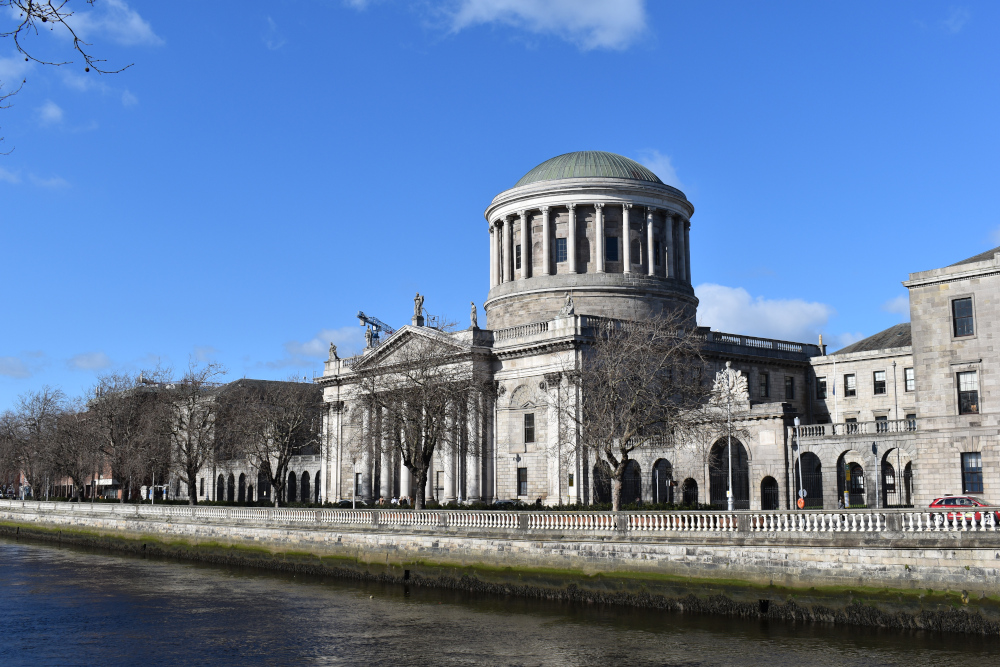Supreme Court: Search of digital contents of computer unlawful as gardaí failed to seek authority in search warrant application

The Supreme Court has held that the seizure of computer devices from an accused murderer’s home was unlawful in circumstances where gardaí failed to seek authority from the District Court when applying for a search warrant. While the gardaí always intended to search the digital contents of computer devices found in the accused’s home, such devices were not mentioned in the application for the warrant.

About this case:
- Citation:[2023] IESC 5
- Judgment:
- Court:Supreme Court
- Judge:Mr Justice Peter Charleton
Delivering judgment in the case, Mr Justice Peter Charleton emphasised that computer devices contained a huge volume of information and there were significant privacy concerns arising from police searching of these devices. As such, it was necessary for the District Court judge to be told that such devices were intended to be seized and digitally searched so that the court could consider whether it was appropriate to allow gardaí to search the devices.
Background
The appeal related to the well-publicised case involving Mr Patrick Quirke who was accused of murdering Mr Bobby Ryan in June 2011. Prior to his death, Mr Ryan was in a relationship with Ms Lowry. Ms Lowry had previously been in a relationship with Mr Quirke.
Although an extensive search was carried out at the time of Mr Ryan’s disappearance, his body was not found in the local area. However, in April 2013, Mr Quirke informed gardaí that he had discovered human remains in a disused water tank on his land (the accused had leased the land from Ms Lowry). The remains belonged to Mr Ryan.
Mr Quirke became the main person of interest for gardaí. In a number of voluntary interviews, he denied any involvement in the death. A search warrant was obtained in Mary 2013 to search the accused’s home. A number of items were seized in the search, including computer devices. A forensic examination of the devices revealed internet searches which included “a human corpse post mortem: the stages of decomposition”, “How DNA works”, and other searches relating to the rate and extent of body decomposition following death.
However, the search warrant which was obtained by gardaí did not mention computer devices at all. Instead, the application related to physical items which may have been located in Mr Quirke’s home, including Mr Ryan’s clothing, keys, Mr Ryan’s mobile phone and the weapon used in the murder.
Mr Quirke was later charged and tried for the murder. The evidence against Mr Quirke was largely circumstantial.
During the trial, an application was made by the accused that the search warrant had been unlawfully obtained by gardaí. It was submitted that the gardaí intended at all times to seize any computer devices belonging to Mr Quirke and to forensically examine them, but this was not mentioned to the District Court judge.
The trial judge ruled that the search warrant was valid, stating that there was no requirement that an information must contain a definitive list of all the evidence to be seized in a warrant. There was also no requirement to specifically inform the District Court that the gardaí intended to seek and seize computers.
The Court of Appeal upheld that validity of the warrant, although it was noted that the absence of computers from the sworn information was “certainly sub-optimal”. The matter was appealed to the Supreme Court.
Supreme Court
Delivering judgment in the case, Mr Justice Charleton began by noting that a computer was not a separate and distinct “place” for the purpose of a search warrant. A computer was just like a knife or bloodstained rag in this regard. Accordingly, a computer device found at an authorised place could be validly seized and examined physically for, for example, DNA samples.
However, section 6 of the of Criminal Justice Act 2006 stated that a “place” was defined as meaning “a physical location”. It was not defined as a virtual space. As such, the court said: “While this does not mean that a computer cannot be searched for, and seized and later examined beyond the physical space, there should be focus on what the extent of the warrant authorised in those terms and the interposition of the judicial mind as a necessary protection in that process.”
In this case, there was “no notice whatsoever” to the District Court judge that the gardaí were interested in the digital space of the accused’s computer devices. As such, it was said that the gardaí failed to properly inform the District Court of their intentions. It was necessary to set out an intention to seize computer devices as, by inference, a court could consider if a search beyond the physical space should be authorised.
Mr Justice Charleton went on to outline a detailed history of the common law powers of search. It was noted: “Legislation has not enabled the search of a virtual space upon the seizure of a computer where the desire to search outside ‘a physical location’ has not been put forward for potential judicial authorisation.”
The court went on to consider the virtual space as a focus of suspicion for police. The court outlined that computers store an immense amount of information on a person and accordingly, “privacy interests are markedly stronger in the case of computers because of the manner in which modern society lives through devices which record every communication and passing thought that inspires a search”.
There remained a duty on investigators to present a fair summary of the facts to a judge when obtaining a search warrant and reasons should be given to establish a reasonable suspicion or belief for seizure of any item found. While a computer may be physically seized, the gardaí required separate permission to examine the virtual space, the court said.
The case law emphasised the following issues in searching computer devices: “the intervention of a judicial mind; the need for a statutory power; the conformance with the parameters of such power; the need to specify what is in reality sought; and the duty to use a power only for the purpose for which it is granted by statute”.
Applying the principles to the present case, the court held that the intention to interrogate the digital space of the accused’s computers meant that judicial intervention was necessary to permit entry into that space, the court said. There was no justification presented to the District Court to enter the digital space in this case. In fact, computer devices were not even mentioned in the application for the warrant.
In granting the search warrant, the court did not authorise the seizure of the computer for search outside the physical location. It was said: “Hence, without directing the mind of the judge to that virtual world, the seizure of the computer was unauthorised.”
Conclusion
The court held that a judge, when told that the seizure and search of computer devices were part of a search warrant, may infer that the devices would be digitally searched. However, this inference required the judge being informed of the basis for the search, the court said.
Absent simple averments as to why the a search of the digital contents of the devices would assist the investigation, the subsequent entry to the digital space was not contemplated by the District Court.
The court declared that the seizure of the computer devices from the accused’s home was unlawful in the context of an otherwise valid search. The court would hear further argument on the consequences which flow from the ruling.
The People (DPP) v. Quirke [2023] IESC 5









